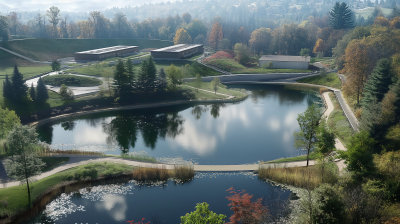
Improving Infiltration and Vegetation in Post-Construction Soils
-
Register
- Non member - $50
- Professional member - $25
- Professional Plus member - $25
- Professional Plus Org member - $25
- Student member - $25
- Young Professional member - $25
- Emeritus member - $25
- Discounted Professional member - $25
- Australia Member - $25
- Australia Non-Member - $50
- Australasia Professional Plus - $25
Improving Infiltration and Vegetation in Post-Construction Soils

Presented by: Richard McLaughlin, Ph.D.
Level: Beginner
Duration: 1 hour
Type of Course: On-Demand
The process of constructing roads and buildings involves heavy equipment grading the land to provide for its new purpose. By the time construction is complete, the soil has been severely disturbed so that what remains is often a dense, low-fertility material that can absorb little rainfall and which plants find inhospitable. This course will describe a variety of methods to reverse this conditions and even turn vegetated areas into stormwater absorption zones. After the problem is defined, the instructor will review mechanical methods to address compaction and a number of amendments that are commonly used. Recent studies of tillage and amendment effects on infiltration and grass growth will be reviewed to provide evidence of how successful these remediation approaches can be to reduce runoff from built areas.
Learning Objectives:
- Terminology used to describe soil and soil condition, understanding what "good" and "bad" values are for soil properties.
- Knowledge of the range of options for soil treatment and the likelihood of success.
- Understand the effect of tillage, depth of tillage, and amendments on vegetation growth, soil compaction, and infiltration.
- Understand the benefits of tillage on infiltration.
- Understand the major factors in successful soil treatment for infiltration as well as factors we have to investigate further.
Course Reviewed: June 2024

Richard McLaughlin, Ph.D.
Raised in Maryland, Dr. McLaughlin attended Virginia Tech for his undergraduate degree in Natural Resource Management. He then studied forestry, soils and soil chemistry at Purdue for his Master's and Ph.D. After 2 years as a post-doctoral researcher at North Carolina State University, he was hired by Ciba-Geigy in Greensboro as a Senior Scientist. After five years of excellent pay and benefits, he returned to NC State in 1993 to conduct applied research and extension education in water pollution prevention. His group has conducted extensive research into improved methods of erosion, sediment, and turbidity control and has trained thousands in standard and advanced practices on construction sites. His Outreach program received the 2010 Education Award from the International Erosion Control Association and his research program received the Applied Research Award from the Soil Science Society of America in 2011.
At the completion of this course you will receive 1 Professional Development Hour of credit. For any questions on continuing education credit, please contact IECA Education at education@ieca.org



